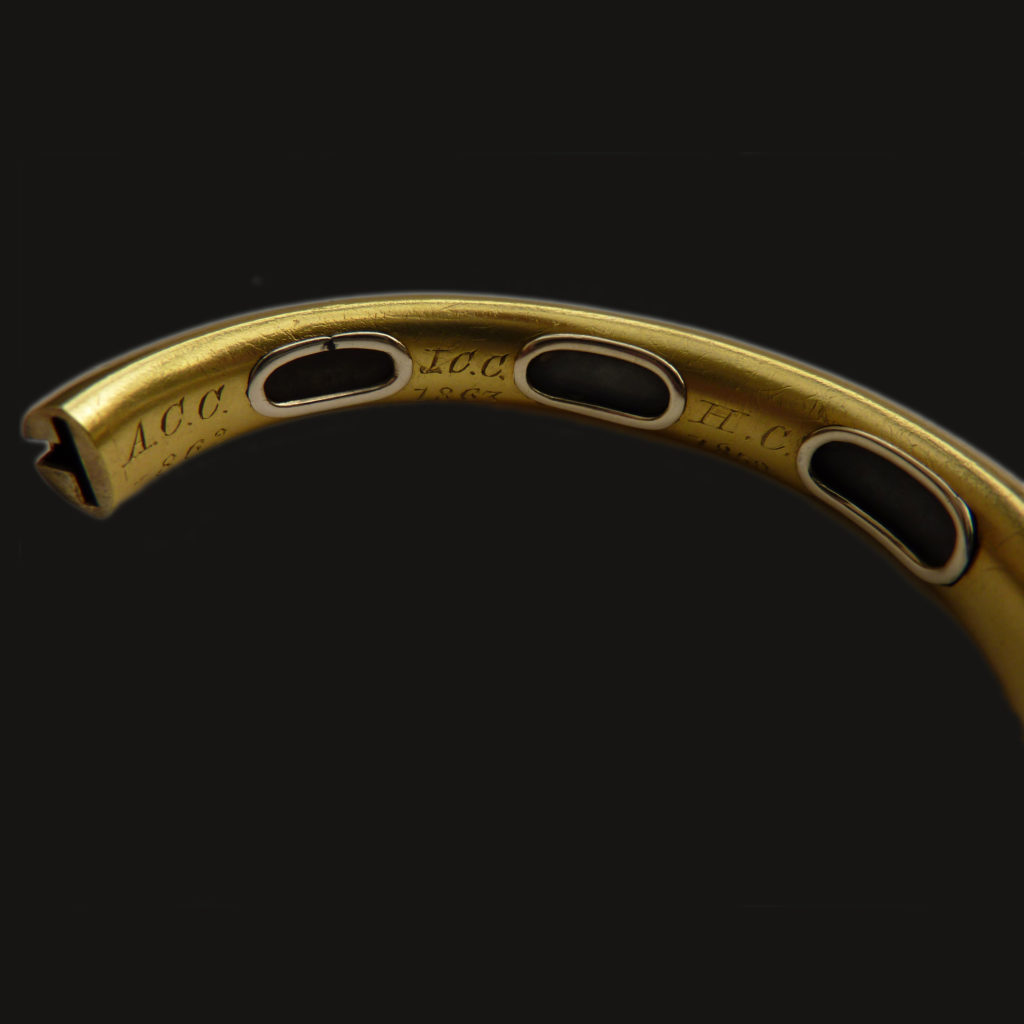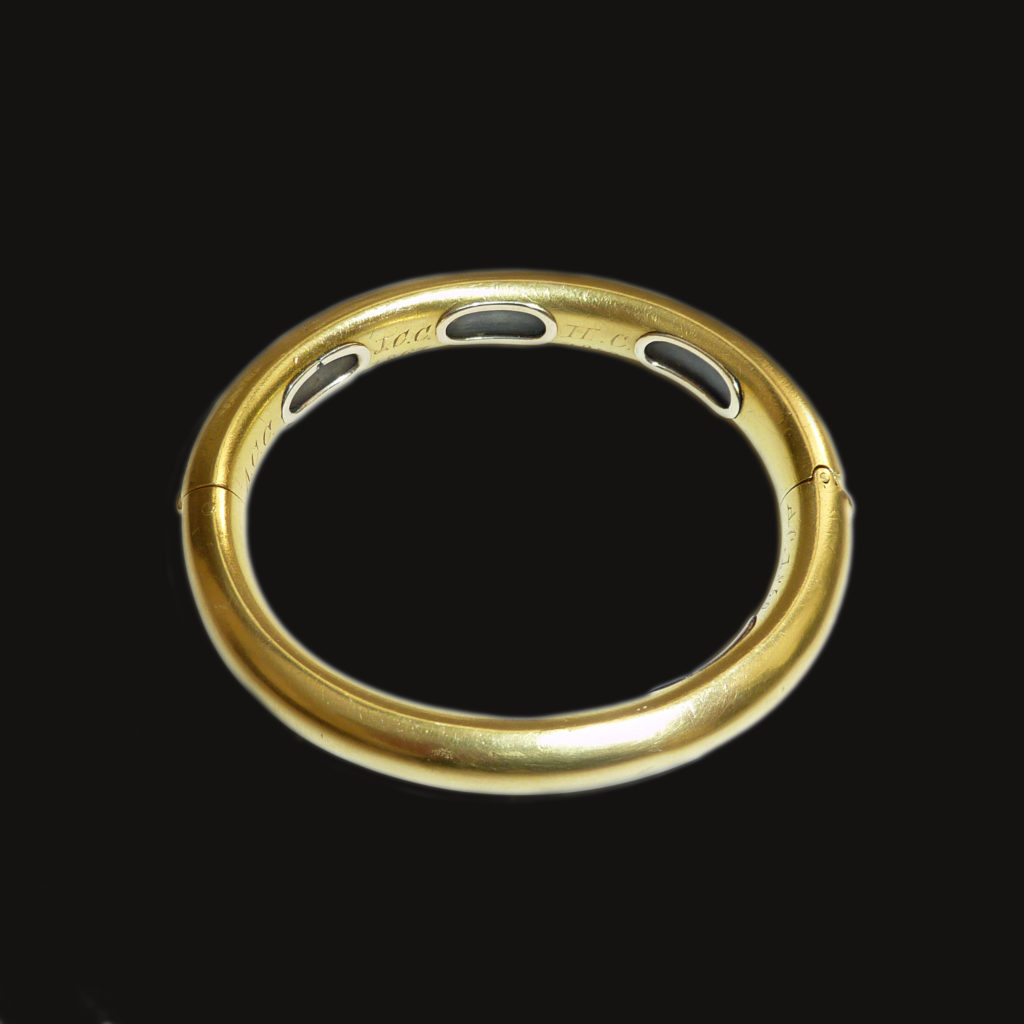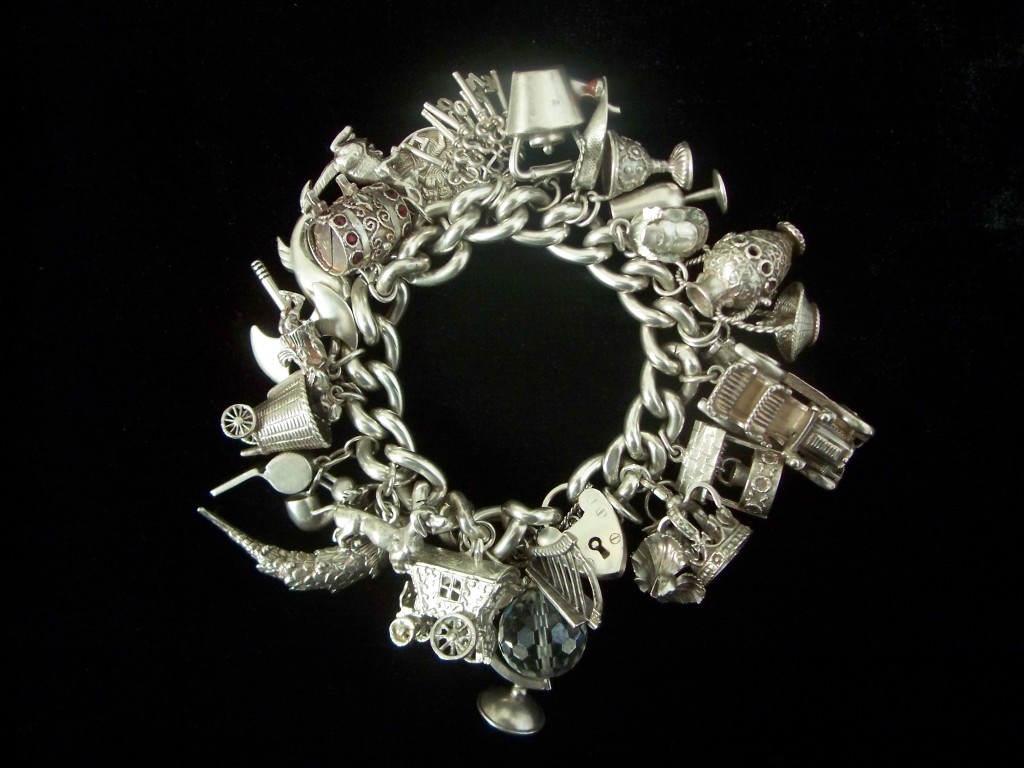Victorian Bracelets, Hairwork and Alloys
By the mid-19th century, bracelets adapted along with the evolution of costume. Voluminous crinolines and wide sleeves accommodated wide-weaves of hairwork and lighter, bulkier materials such as Jet to be worn easily at the wrist.
By 1854, the Hallmarking Act allowed for the use of lower grade alloys in jewellery construction, leading to a higher level of production of lighter clasps and fixtures in bracelets, many of which are very common for the collector to find today. Light materials, such as hairwork, when produced with the rolled-gold or pressed fittings led to bulkier designs being easier to wear.
It should be noted for today’s collector that hairwork does not equate to ‘mourning’, but was a sentimental material used in mainstream fashion, a misconception that many sellers automatically affix to pieces being sold today.
Note the evolution of the bracelet style from the previous century of the clasps seen earlier. This still retains a larger shape, but has adopted the Victorian Rococo revival motifs.








